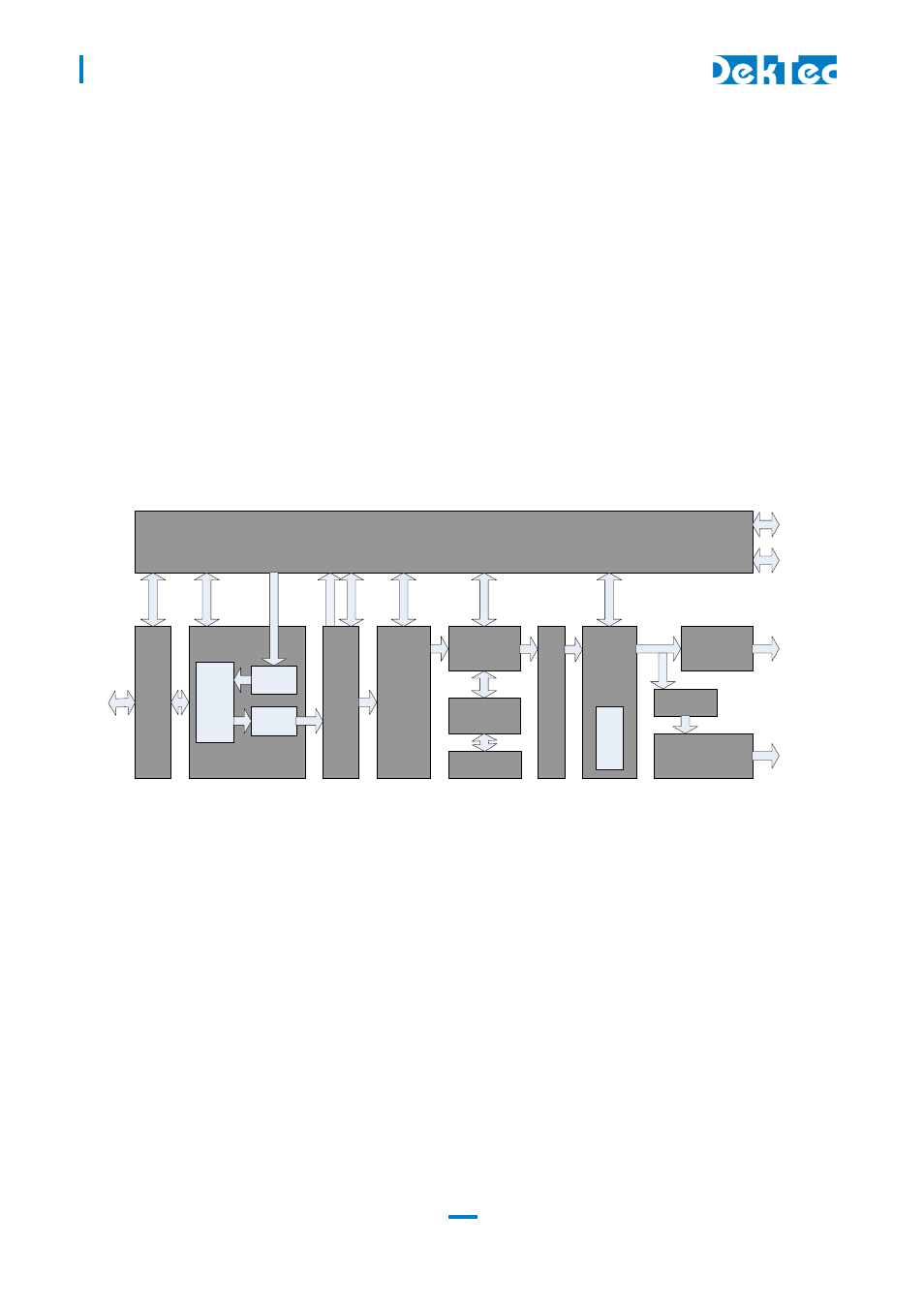6 theory of operation, 1 ip-to-asi converter - functional block diagram – DekTec DTM-3200 IP-ASI Converter User Manual
Page 8

DTM-3200 – OEM Ethernet TSoIP Converter
User Manual
8
Note:
Command-line tool DtmCmd is an example of an application that uses the DTM handler. The
source of DtmCmd is also available on the DekTec website.
1.6 Theory of operation
Essentially, the DTM-3200 consists of two subsystems:
A Stream Processor, which converts the IP packets to a base-band Transport Stream and
outputs it as ASI and parallel, or vice versa;
A processor subsystem that handles all internal and external control (I
2
C, RS232/485/422).
The DTM-3200 is operating either as IP-to-ASI converter, or as ASI-to-IP converter.
1.6.1 IP-to-ASI converter - Functional block diagram
Figure 4 shows the functional block diagram of the DTM-3200 when it is configured as IP-to-ASI
converter.
TS
Transmit
Channel
Processor Subsystem
IP
D
A
T
A
IP
Filter
FEC
reconstructor
B
it
ra
te
c
o
n
tr
o
l
LVDS buffer
IP
to
TS
ETHERNET
INTERFACE
MAC
IP
Transmit-
ter
IP
Receiver
IP
D
A
T
A
DDR2
SDRAM
Controller
DDR2
SDRAM
Phy
Stream
characte-
ristics
extractor
Cable driver
Serializer
RS232 or
RS485 or
RS422
I
2
C
DVB-SPI
DVB-ASI
C
O
N
T
R
O
L
E
th
e
rn
e
t
C
O
N
T
R
O
L
C
O
N
T
R
O
L
C
O
N
T
R
O
L
C
O
N
T
R
O
L
C
O
N
T
R
O
L
Figure 4: Functional block diagram of the DTM-3200 when configured as IP-to-ASI converter
The incoming Ethernet packets are received by the physical layer interface (PHY). The Ethernet
interface checks the packets for corruption and correctness, and sends them to the IP filter that
selects the desired stream. Other IP packets are sent to the processor subsystem in order to support
low-level IP protocols like ARP and DHCP. From the IP Filter the transport stream data enters the
stream characteristics extractor. This block will analyze the stream for specific characteristics like PCR
information. With these characteristics, the DTM-3200 determines the bitrate for transmitting the
stream at the output. The FEC Reconstructor uses the FEC streams (if available) to reconstruct
missing packets (if any).
In the next step, the data is stored in SDRAM. Jitter on the IP input stream may cause late arrival of
some IP packets. The memory is used as a buffer to ‘de-jitter’ the stream. The size of the de-jitter
buffer can be set via the control interface. The IP stream is then converted to a Transport Stream (TS)
with the correct bitrate. The resulting stream is transmitted as an ASI and as a parallel stream at the
same time. The TS contents are not affected by the DTM-3200.
